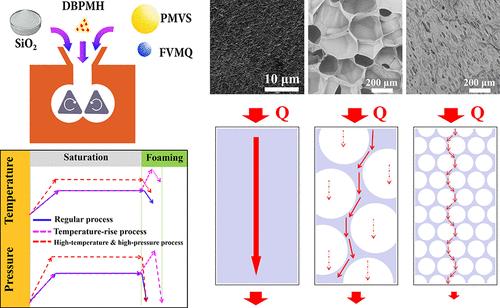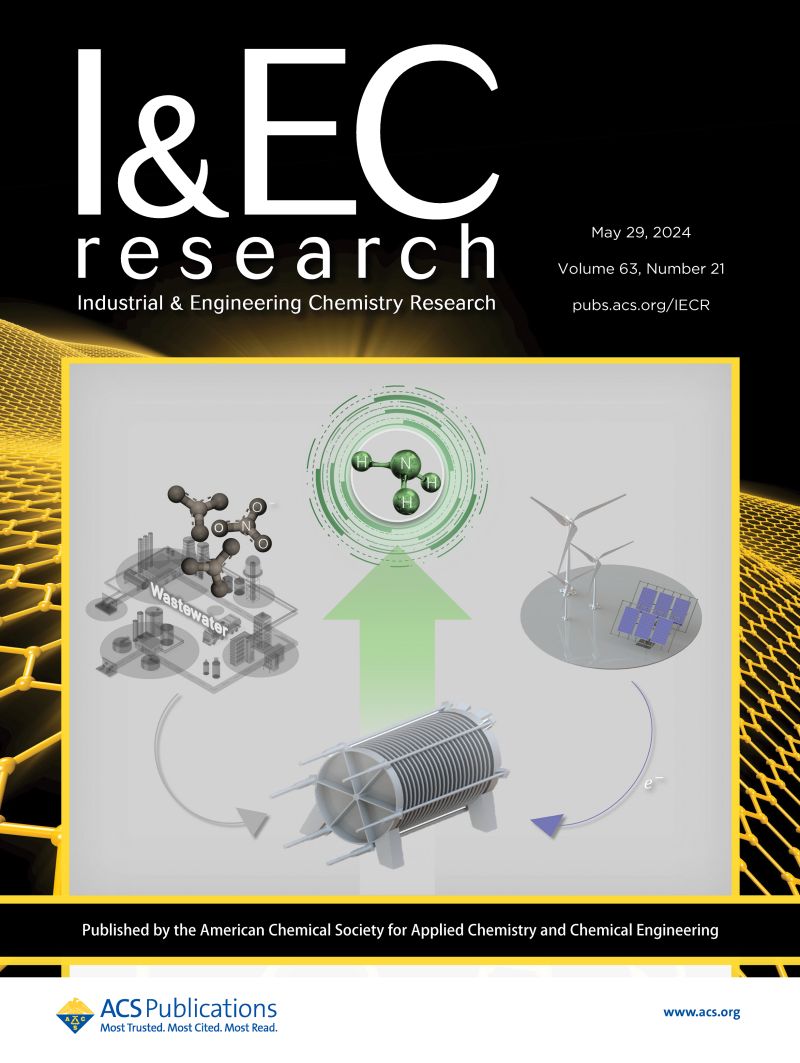Promising Thermal Insulation Silicone Rubber Composite Foams with High Expansion Ratios via Fluorosilicone Rubber Blending and Cell Structure Design
IF 3.8
3区 工程技术
Q2 ENGINEERING, CHEMICAL
引用次数: 0
Abstract
The production of high-expansion-ratio silicone rubber foam has posed a longstanding challenge, particularly due to insufficient porosity, limiting its application as a thermal insulation material in battery packs for new energy electric vehicles, crucial for ensuring battery longevity at low temperatures. Herein, poly(methylvinylsiloxane) (PMVS) was selected as the matrix, and fluorosilicone rubber (FVMQ) with high viscosity and heterogeneous nucleation effects was introduced as a secondary phase to increase the expansion ratio of silicone rubber. By analysis of the vulcanization characteristics and foaming behavior of PMVS/FVMQ composites, the influence mechanism of FVMQ on the cell structure was investigated. PMVS/FVMQ composite foams with superior expansion ratios compared to both PMVS and FVMQ foams were successfully fabricated. Leveraging FVMQ’s low inherent thermal conductivity and its ability to promote the expansion ratio, the thermal conductivity of PMVS/FVMQ (8:2) composite foams was reduced by 32.8% compared to PMVS foams under identical preparation conditions. Furthermore, two saturation processes, namely, the “temperature-raise process” and “high-temperature & high-pressure process”, were devised to simultaneously promote cell nucleation and cell growth, leading to significantly reduced cell sizes while maintaining high expansion ratios. The more refined cell structure further improves the thermal insulation performance, achieving a thermal conductivity as low as 0.033 W/m·K, approaching that of air.

求助全文
约1分钟内获得全文
求助全文
来源期刊

Industrial & Engineering Chemistry Research
工程技术-工程:化工
CiteScore
7.40
自引率
7.10%
发文量
1467
审稿时长
2.8 months
期刊介绍:
ndustrial & Engineering Chemistry, with variations in title and format, has been published since 1909 by the American Chemical Society. Industrial & Engineering Chemistry Research is a weekly publication that reports industrial and academic research in the broad fields of applied chemistry and chemical engineering with special focus on fundamentals, processes, and products.
 求助内容:
求助内容: 应助结果提醒方式:
应助结果提醒方式:


